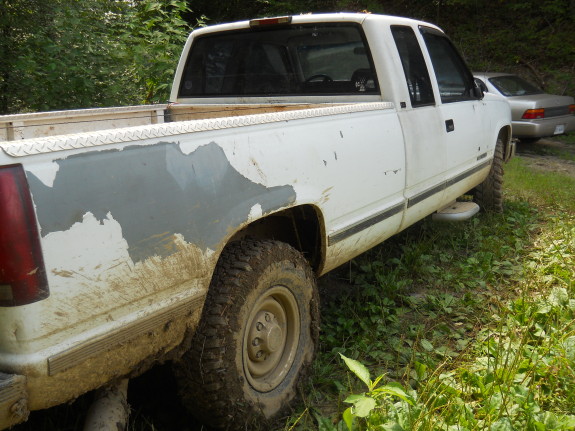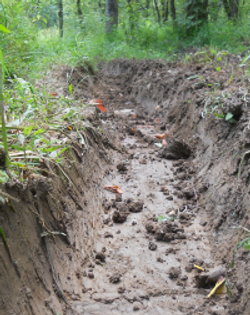
Truck traction update


The above picture of our
truck being parked in its designated spot represents a small victory
for us.
It's a hard thing to gauge,
but if I had to guess I would say the new
tires are giving us a 30 percent increase in traction and steering
control.
We've been able to haul in
some much needed manure, a load of firewood, and a new futon couch
during what must be our driest stretch of 2011 so far this year.
The next step will be to pick
up a load of big gravel to fill in some of the troubled spots...that is
if the rain can hold off for another few days.
Want more in-depth information? Browse through our books.
Or explore more posts by date or by subject.
About us: Anna Hess and Mark Hamilton spent over a decade living self-sufficiently in the mountains of Virginia before moving north to start over from scratch in the foothills of Ohio. They've experimented with permaculture, no-till gardening, trailersteading, home-based microbusinesses and much more, writing about their adventures in both blogs and books.
Want to be notified when new comments are posted on this page? Click on the RSS button after you add a comment to subscribe to the comment feed, or simply check the box beside "email replies to me" while writing your comment.

Actually I was kind of joking
I would imagine that to build a really long-lasting road in an area that floods it would have to be raised above the water level and have a proper foundation. Which is probably way too much work for you two.
You might get away with pouring a relatively thick (say 4"?) slab of concrete in a trench at ground level. You don't want it to get too wet when it's curing, otherwise it will shrink too much and crack. If you'd dig a 4" deep trench, line it with plastic foil and pour concrete in it, it might work. The concrete should be thick enough so that the concentrated loads from the truck tires doesn't cause the underside to fail in tension, as concrete is prone to. 4" sounds plenty thick to me, but you should really ask an expert. Generally, concrete gets stronger when you use less water. So you should use a relatively water-poor mix and prevent the concrete from absorbing water from the wet soil, hence the plastic. But that also means that it takes longer to cure and doesn't pour very well. For a slab that's not much of a problem, though.
But if you really want to build a road, you should talk to to a roadbuilding engineer. This really isn't my field.